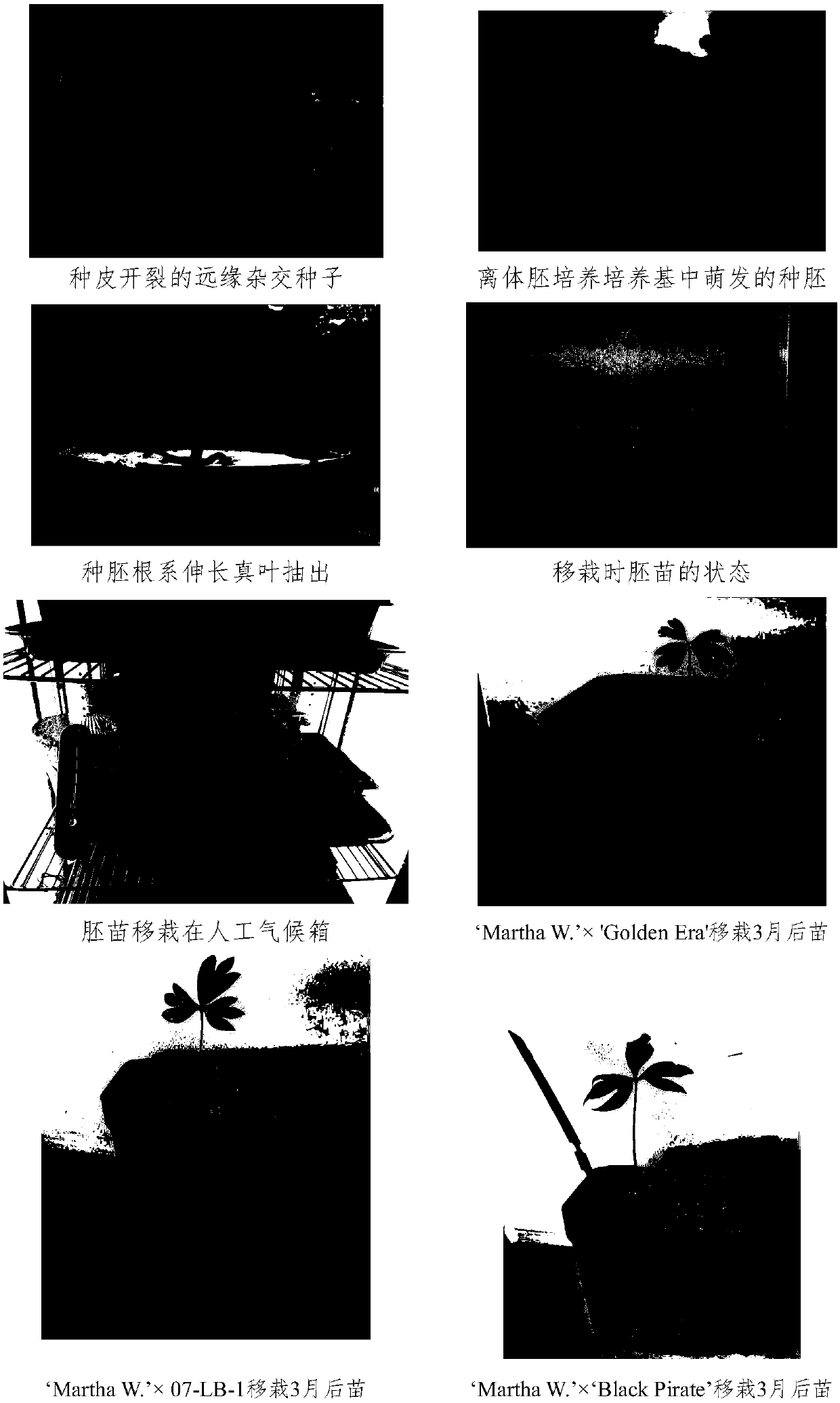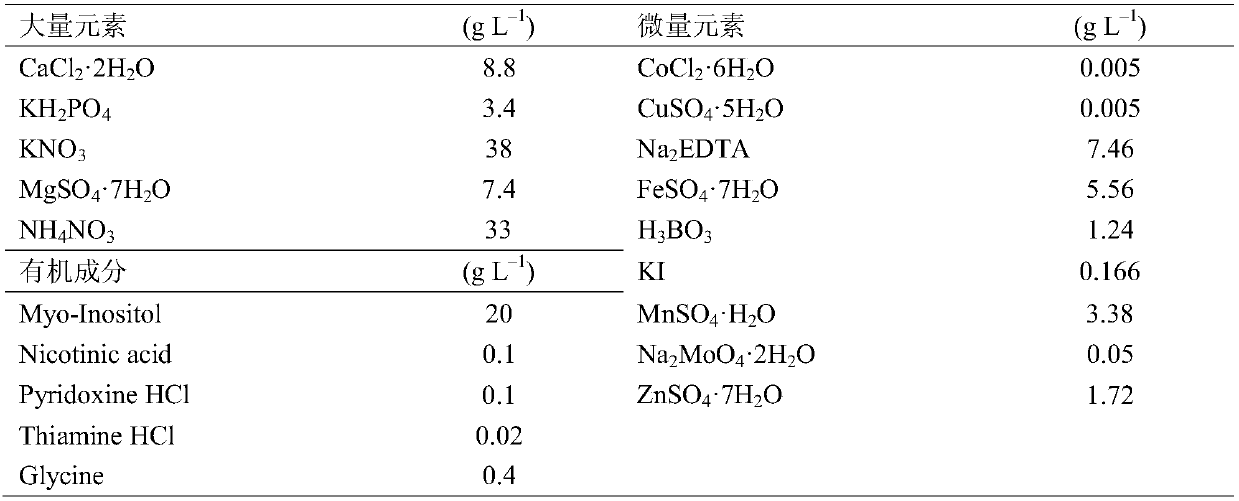Method for increasing seedling survival rate of intergroup distant hybrid seeds of paeonia
A technology of distant hybridization and Paeonia genus, applied in horticultural methods, botanical equipment and methods, planting substrates, etc., can solve the problem of low seedling emergence rate, obvious difference in the effect of in vitro embryo culture of different genotypes, and unidentified seeds that are difficult to germinate and other issues to achieve the effect of improving the seedling rate
- Summary
- Abstract
- Description
- Claims
- Application Information
AI Technical Summary
Problems solved by technology
Method used
Image
Examples
Embodiment 1
[0052] Obtaining and screening of hybrid seed of embodiment 1
[0053] 1. Experimental materials
[0054] It was carried out in 2016 and 2017 at the Peony and Paeoniae Research Base of Beijing Forestry University, Jiufeng National Forest Park, Haidian District, Beijing. The female parent used in the hybridization is P.Lactiflora'Martha W.', the male parent is P.×lemoineii'Golden Era', and the high-generation hybrid P.×lemoineii(07-LB-1) between the Mudan subgroups (Cao Xijun, 2007) and the distant hybrid P.×lemoineii 'Black Pirate' bred in the United States.
[0055] 2. Hybrid pollination
[0056] Conventional methods for cross pollination. The pollen of the male parent was collected in late April. When the flower buds of the male parent are in the dew stage, the anthers are collected and dried in the shade indoors to loose powder. The pollen was collected in a clean centrifuge tube, and the variety name was marked and stored in a -20°C refrigerator. Remove the side buds...
Embodiment 2
[0060] The screening of embodiment 2 isolated embryo culture conditions
[0061] 1. Experimental materials
[0062] Naturally hybridized purpura seeds.
[0063] 2. Experimental method
[0064] Wash the purpura seeds, rinse them with running water for 15 minutes, rinse them with detergent for 15 minutes, rinse them with tap water for 15 minutes, and place them on an ultra-clean workbench. Disinfect by immersing in 70% alcohol for 1 min, then sterilize by shaking twice with 5% sodium hypochlorite solution, and then rinse with sterile water 5 times. Use tweezers to take out the seed embryo and inoculate it in the embryo seedling medium, culture temperature 25±4℃, photoperiod 14h·d -1 , light intensity 32.4umol m -2 ·s -1 .
[0065] ①Effects of different hormones on embryo growth
[0066] Different hormone combinations were used to study their effects on the growth of embryos, respectively CK (without hormone), 0.25mg / L IAA, 0.25mg / L IAA+0.5mg / L GA 3 , 0.5mg / L GA 3 , 0.25...
Embodiment 3
[0075] The detached embryo of embodiment 3 cracking hybrid seed is cultivated into seedling
[0076] 1. Experimental materials
[0077] Dehiscented seeds of distant hybrids between groups of Paeoniae.
[0078] 2. Experimental method
[0079] ①Remove the seed coat and wash the seeds with cracked seed coat. When removing the seed coat, you can keep the hilum point according to the specific situation. The rest of the disinfection steps are the same as above. Roll on a clean filter paper, absorb moisture by the filter paper and make it dry, then place it on another clean filter paper for operation, find the best anatomical position according to the shape of the seed and the position of the umbilical point, and take out the seed embryo.
[0080] ②Use tweezers to take out the plump seed embryos of the seed coat cracking harvested in the distant hybridization between groups and inoculate them in the best-treated seedling growth medium obtained in Example 2, and count the embryo ger...
PUM
 Login to View More
Login to View More Abstract
Description
Claims
Application Information
 Login to View More
Login to View More - R&D
- Intellectual Property
- Life Sciences
- Materials
- Tech Scout
- Unparalleled Data Quality
- Higher Quality Content
- 60% Fewer Hallucinations
Browse by: Latest US Patents, China's latest patents, Technical Efficacy Thesaurus, Application Domain, Technology Topic, Popular Technical Reports.
© 2025 PatSnap. All rights reserved.Legal|Privacy policy|Modern Slavery Act Transparency Statement|Sitemap|About US| Contact US: help@patsnap.com



